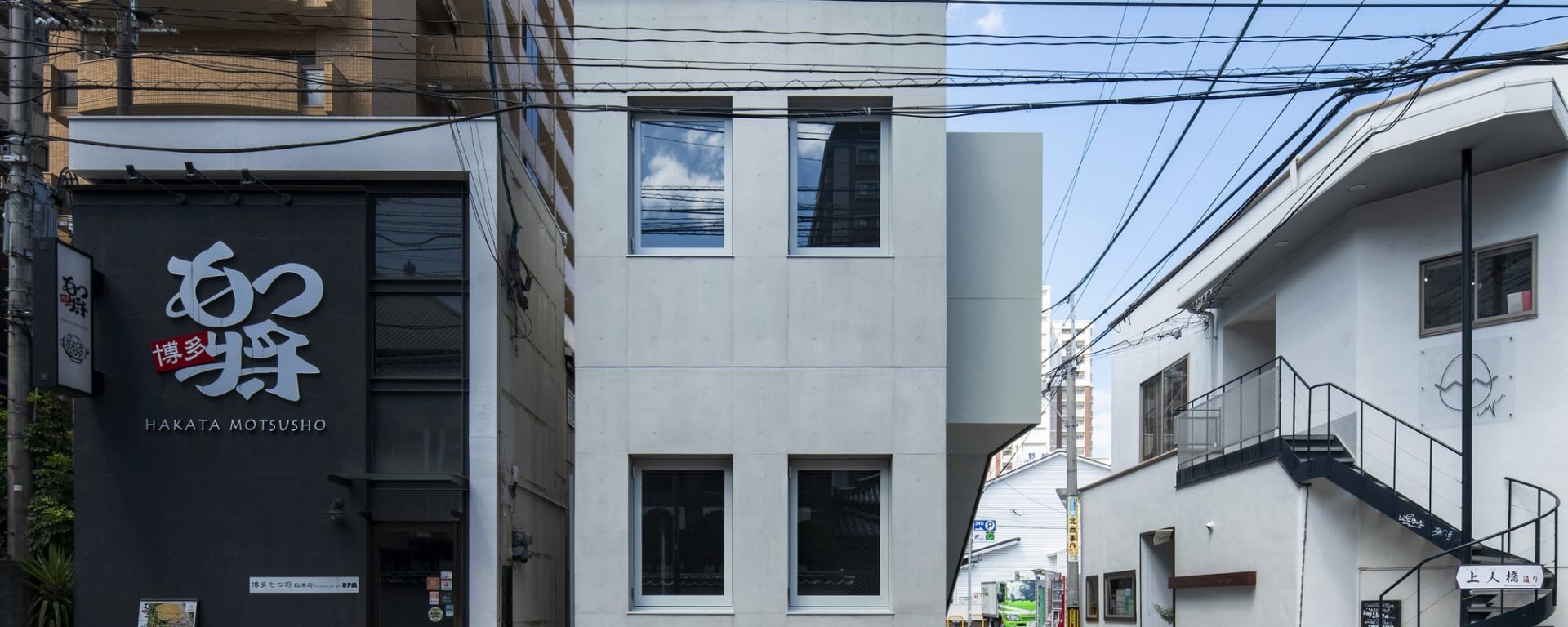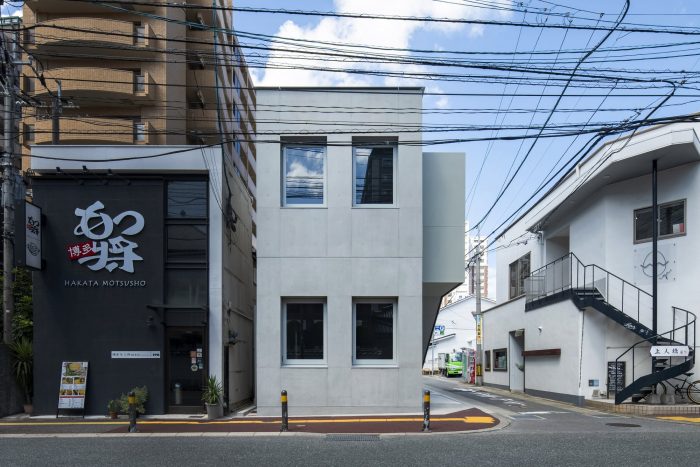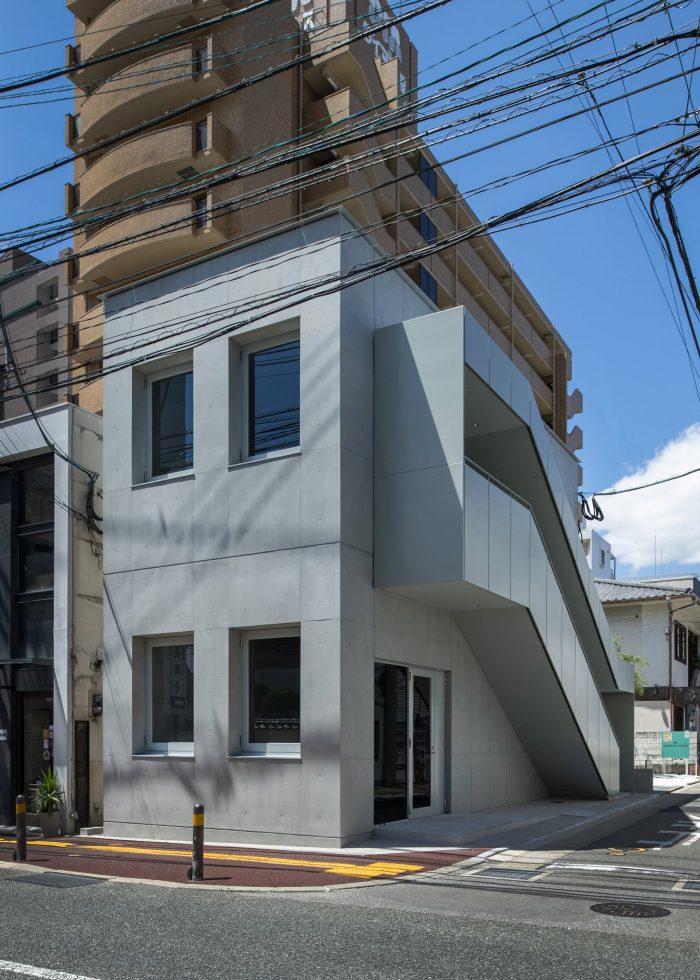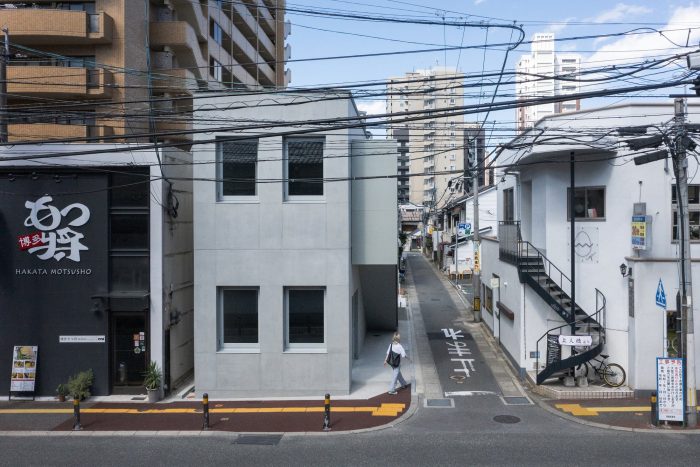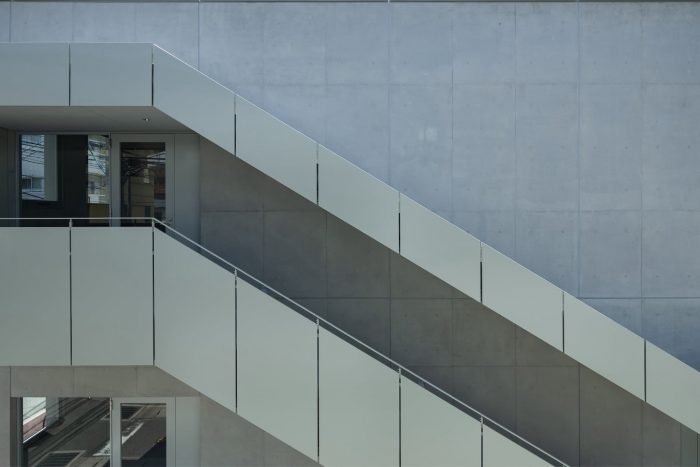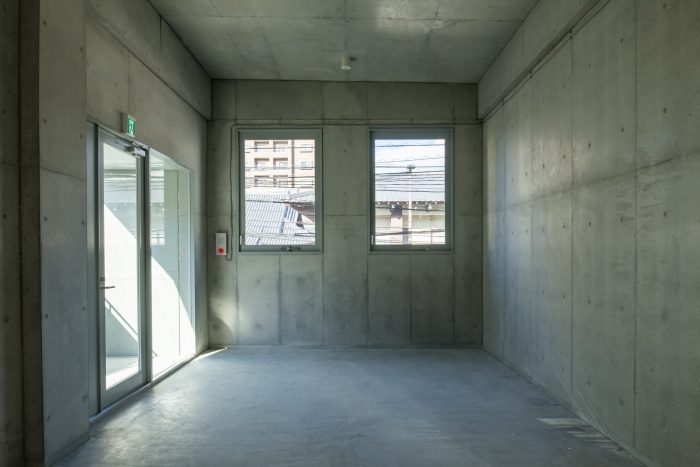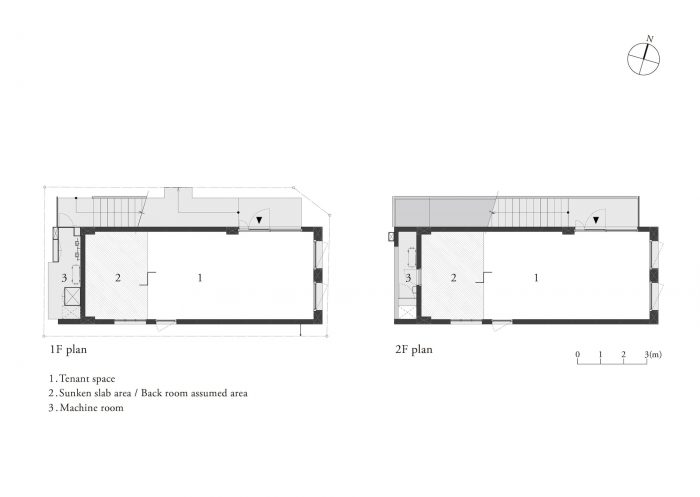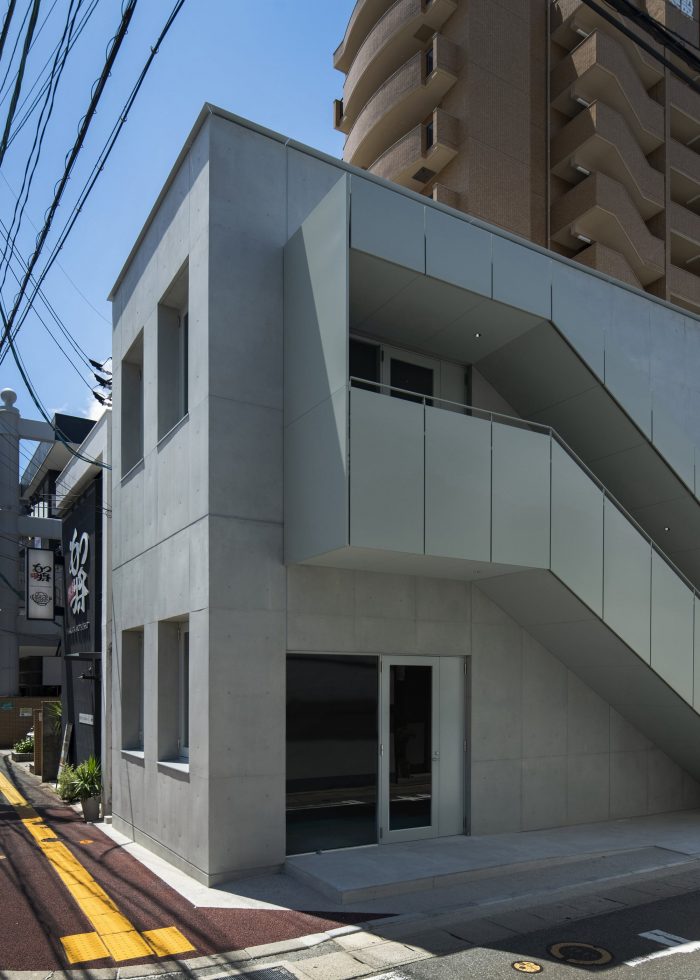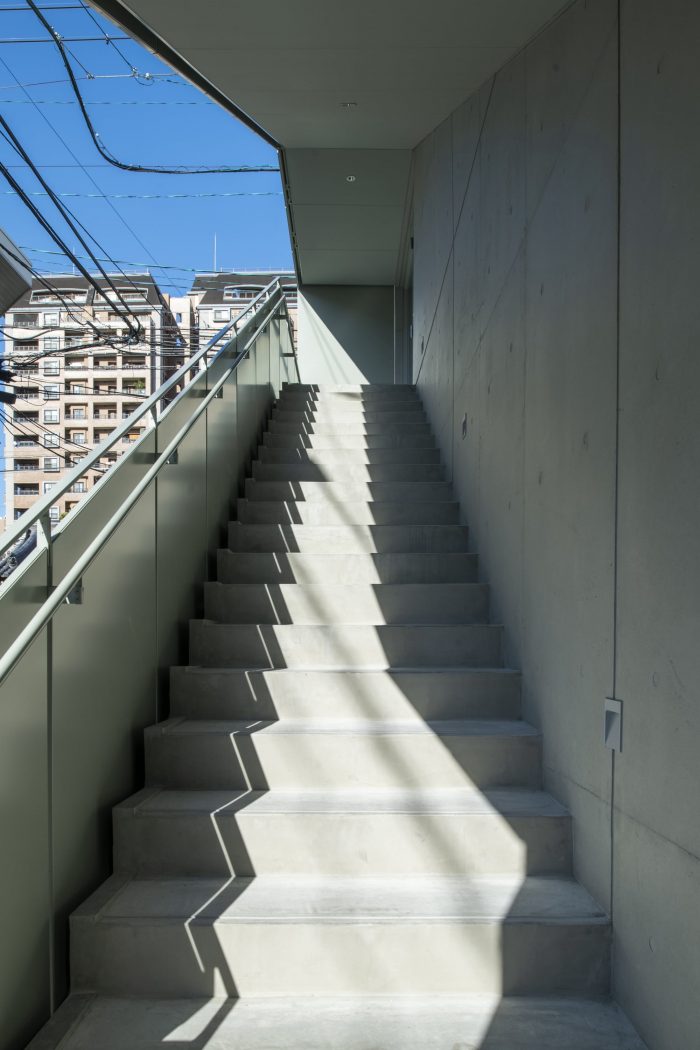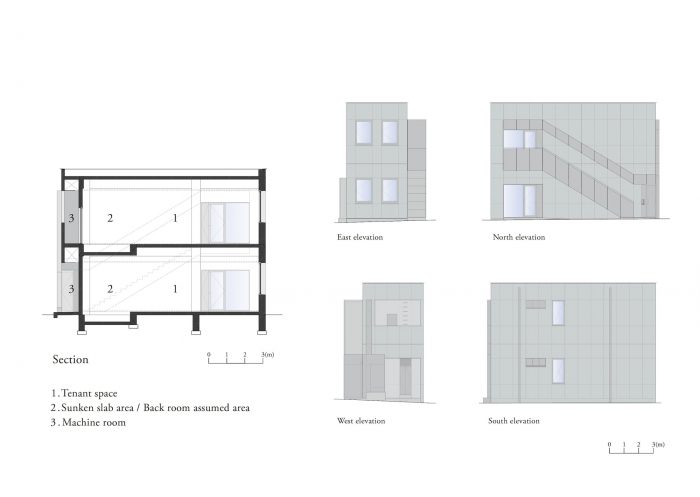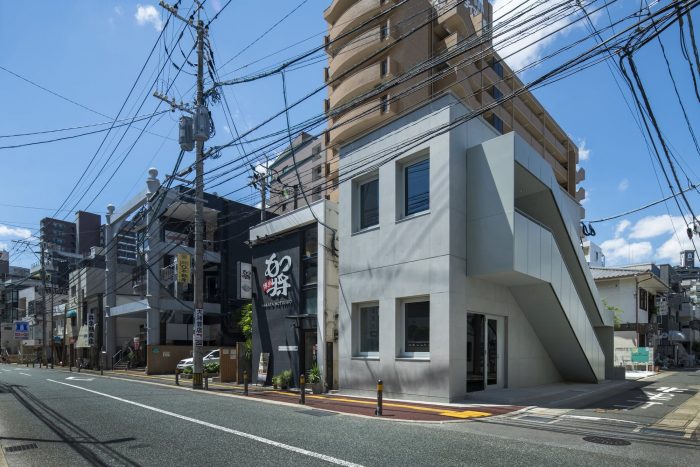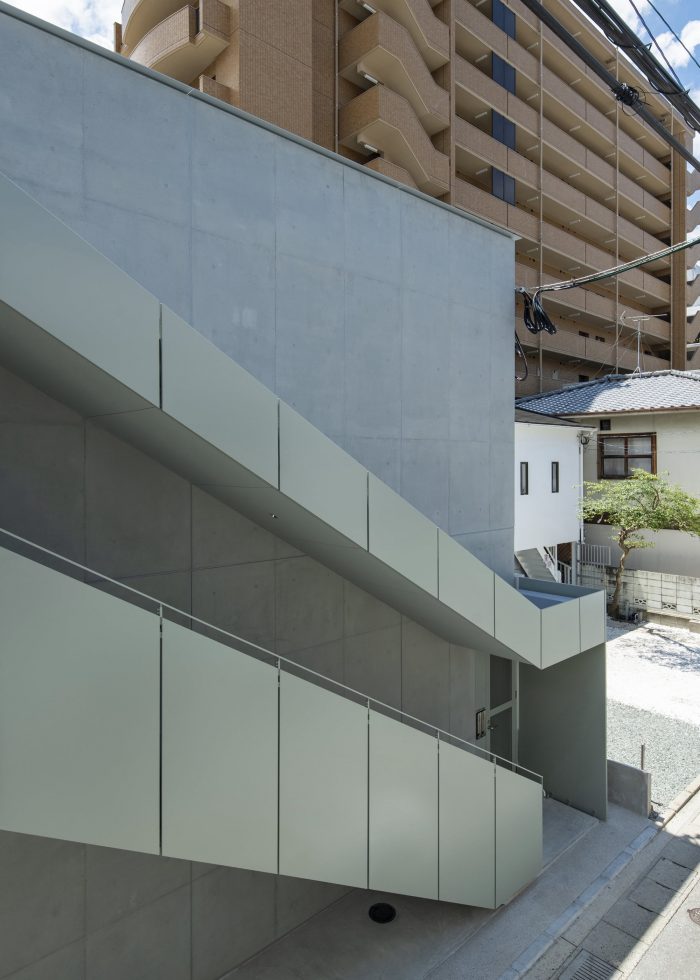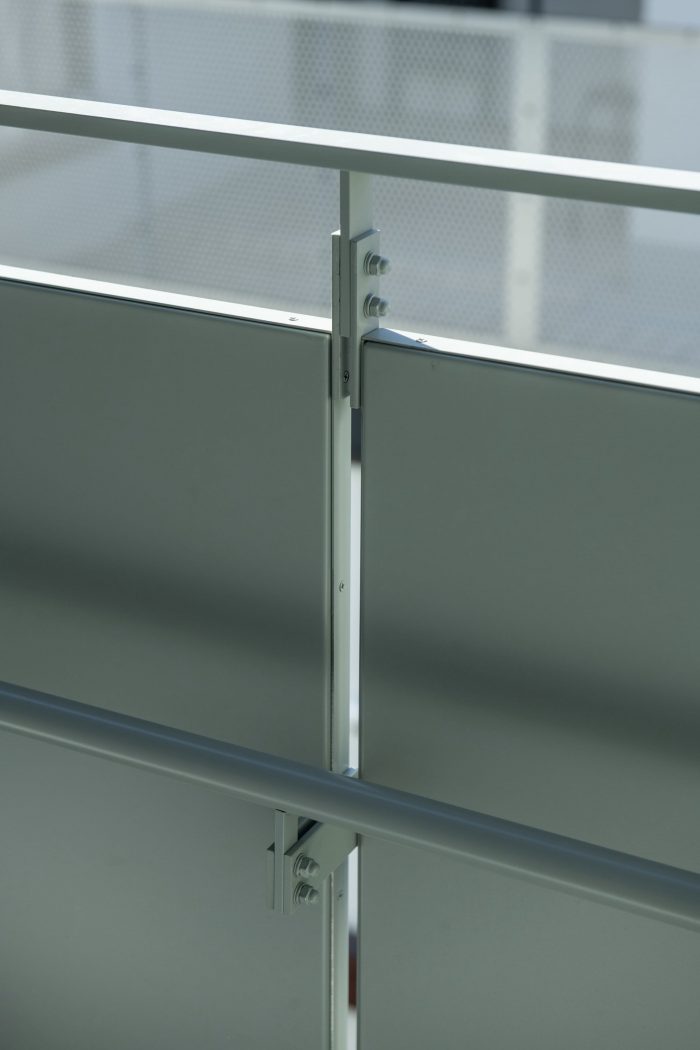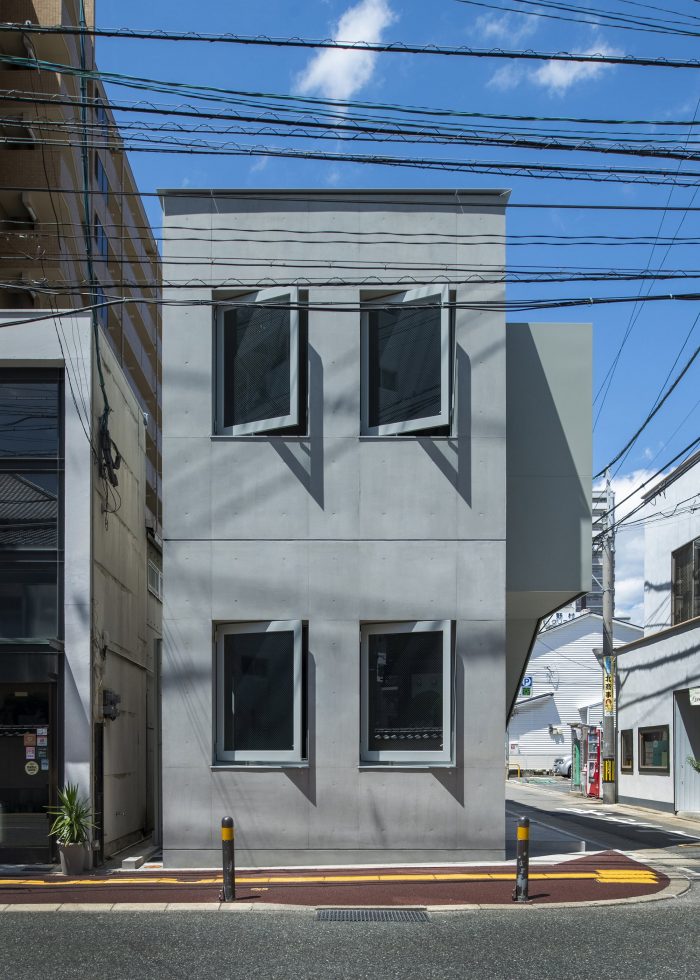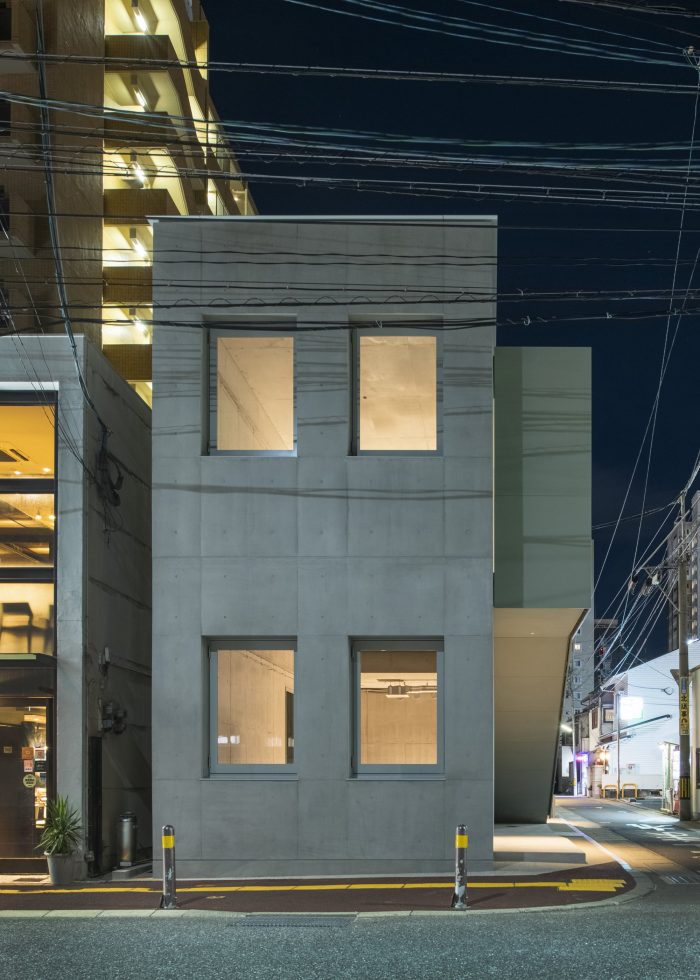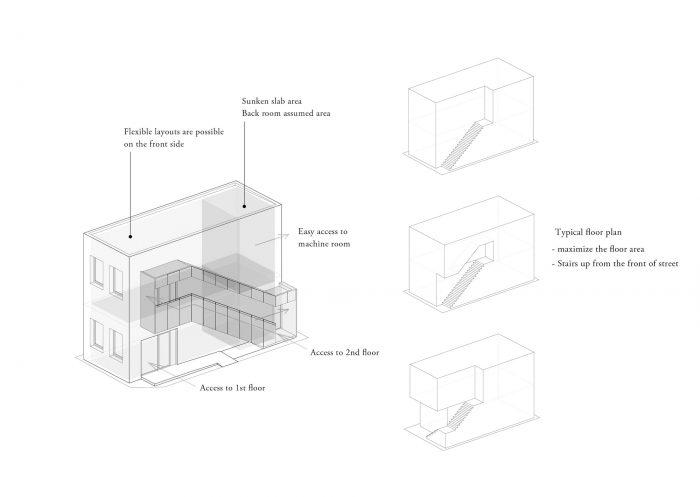一个位于福冈市中心的新租户建筑项目。规划场地周围是一个商业区,混合着餐馆、日用百货店和停车场。客户找到我们,让我们考虑在这个商业区一角约72平方米的紧凑场地上建造一个合适的建筑。客户的愿望是让租户有吸引力地进入这个地点。经过反复讨论,我们确定了一个高质量的低层建筑,而不是一个高耸的高层建筑。此外,除了在外观上给人以正确的印象外,提供一个空间让租户可以轻松地编制有吸引力的计划,被认为对建筑的质量和吸引力非常重要。
A new tenant building project in the center of Fukuoka. The area surrounding the planned site is a commercial district with a mix of restaurants, general merchandise stores, and parking lots. The client approached us to consider an appropriate building for a compact site of approximately 72sqm in a corner of this commercial area. The client’s wish was to have attractive tenant access to this location. After repeated discussions, we settled on a low-rise building of high quality, rather than a towering high-rise. Furthermore, in addition to creating the right impression on the exterior, providing a space where tenants can easily compose attractive plans was considered important for the quality and appeal of the building.
要解决的第一个问题是如何安装楼梯。一般来说,在类似于此的低层租户建筑中,考虑到进入上层的问题,楼梯通常被挂在靠近前路的地方开始爬升。因此,楼梯在立面上会有很强的存在感,而二楼的入口不可避免地会位于正面道路的另一侧。因此,在设想实际的室内布局时,预计厨房和其他后院功能必须布置在前路边,那里的环境实际上更有利。因此,我们有意选择以倒置的方式悬挂楼梯。通过这种方式,我们设想将后院的功能布置在建筑后侧的二楼,以及通过在建筑后侧使用下沉式地板来规划来自外部设施空间的有效管道,会更加容易。
The first issue to be addressed was how to mount the staircase. Generally, in low-rise tenant buildings similar to this one, staircases are usually hung so that they start climbing close to the front road in consideration of access to the upper floors. As a result, the staircase would have a strong presence on the façade, and the second-floor entrance would inevitably be located on the opposite side of the front road. Thus, when envisioning the actual interior layout, it was anticipated that the kitchen and other backyard functions would have to be laid out on the front roadside, where the environment is actually more favorable. Therefore, we intentionally chose to hang the staircase in an inverted manner. In this way, we envisioned that it would be easier to lay out the backyard functions on the rear side of the building on the second floor, as well as to plan efficient piping from the external facility space by using a down-slab floor on the rear side of the building.
虽然楼层空间通常是普通租户建筑的一个重要考虑因素,但在保证合理的楼层数量的同时,优先考虑组织外立面设计。更具体地说,我们没有将楼梯的背面作为室内的一部分,也没有扩展二楼。相反,我们设计了一个同质的箱形体,每层楼高4米,有一个简单的箱形楼梯。外墙的印象与楼层的大小同样重要。楼梯是用钢筋混凝土悬臂(悬臂梁)建造的,不锈钢板用L型角组装在上面。这些面板通过扶手相互连接,使楼梯作为一个整体具有强度,同时减少必要的部件数量,以创造一个极简的印象。混凝土表面采用了淡绿灰色的保护层,以配合楼梯区域的色调,与建筑的整体色彩方案相融合,同时将内部和外部与周围的建筑区分开来。
While floor space is often an important consideration for ordinary tenant buildings, priority was given to organizing the façade design while securing a reasonable amount of floor. More specifically, we did not incorporate the back of the stairs as part of the interior, nor did we extend the second floor. Instead, we designed a homogeneous box-shaped volume with a 4-meter-high floor height on each floor and a simple box-shaped staircase. The impression of the facade was as important as the floor size. The staircase was constructed with reinforced concrete cantilevers (cantilever beams), to which stainless steel panels were assembled using L-angles. The panels were connected to each other via a handrail to give the staircase strength as a whole while reducing the number of necessary parts to create a minimalistic impression. A pale green-gray protective coating was used for the concrete finish to match the tone of the staircase area, blending in with the overall color scheme of the building while differentiating the interior and exterior from the surrounding buildings.
Architects: CASE-REAL
Area : 48 m²
Year : 2022
Photographs :Hiroshi Mizusaki
Manufacturers : KEIM, Union, D-Line, Daiko, Nasta
Lead Architects : Koichi Futatusmata, Sanae Furusato
Contractor : Kyushukensetsu Co.,Ltd, Kosuke Yamamoto, Yuta Makino
Structural Engineering : Hinata Structural Design Office Co.,Ltd.
Contract Design : Kyushukensetsu Co.,Ltd., Haruka Higuchi
Structural Engineer : Eiji Shiramizu
City : Fukuoka
Country : Japan

